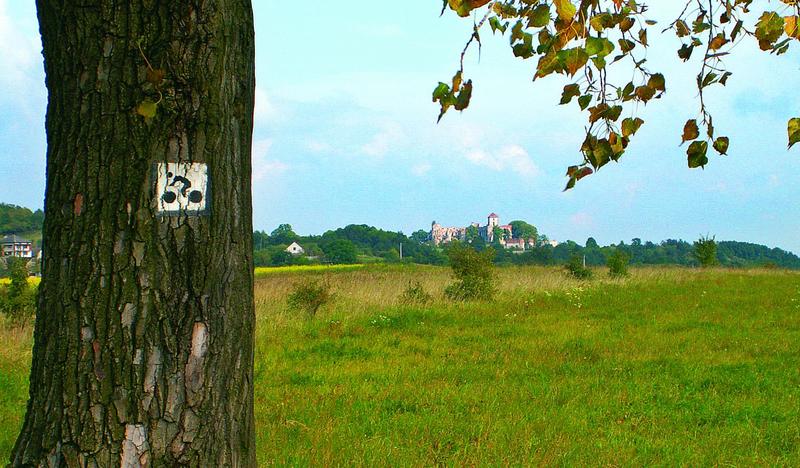Jura Upland Bicycle Trail of the Eagles’ Nests (Małopolska region section)
Jura Upland Bicycle Trail of the Eagles’ Nests (Małopolska region section)

Difficulty: Medium
Trail length: 89,1 km
Facilities: Camping sites, Place for a bonfire, Viewpoints, Information boards, Educational paths
The section in the Małopolska region is mostly devoid of what is most characteristic of the Silesian part of this trail, i.e. a large number of sandy fragments. Of course, we also come across them, but they are not really long. Anyway, for this trail we recommend a bike with wide tires (mtb / tourist / gravel). The trail is very well marked, there are several resting places along the way with information boards and mileage boards. Up to Krzeszowice the trail runs practically parallel to the trail of the future VeloRudawa route and the railway line.
The maximum altitude is: 464 m asl. The lowest point on the route is at an altitude of 207 m asl.
The trail runs 44% on roads separated from car traffic. 44% of the route runs through forest.
The route runs through the following protected areas:
Landscape Parks: Eagles' Nests Landscape Park, Krakow Valleys Landscape Park, Tenczynek Landscape Park
Reserves: Eliaszówka Valley
Natura 2000: Jurassic Valleys, Jaroszowiec, Czerna, Krzeszowice, Ostoja Środkowojurajska
Tourist attractions: Wooden Villa from 1896 (Zabierzów), Carmelite Museum in Czerna (Krzeszowice), Museum of the Krzeszowice Land (Krzeszowice), Potocki Palace in Krzeszowice (Krzeszowice), Vauxhall Palace (Krzeszowice), Rabsztyn Castle ( Olkusz), Tenczyn Castle (Krzeszowice), Castle in Bydlin (Klucze).
Natural attractions: Natura 2000 – Czerna, Natura 2000 – Jurassic Valleys, Natura 2000 – Jaroszowiec, Natura 2000 – Krzeszowice, Natura 2000 – Ostoja Środkowojurajska, Eliaszówka Valley Nature Reserve, Racławka Valley Nature Reserve, Ruskie Góry Nature Reserve, Skała Kmita Nature Reserve, Smoleń Nature Reserve, Krakow Valleys Landscape Park, Eagle Nests' Landscape Park, Tenczynek Landscape Park.
Facilities: Camping sites, Place for a bonfire, Point of observation, Viewpoints, Information boards, Shelters, Educational paths
Type of surface: unimproved dirt road, improved dirt road, asphalt (even), asphalt (poor quality), concrete cube
